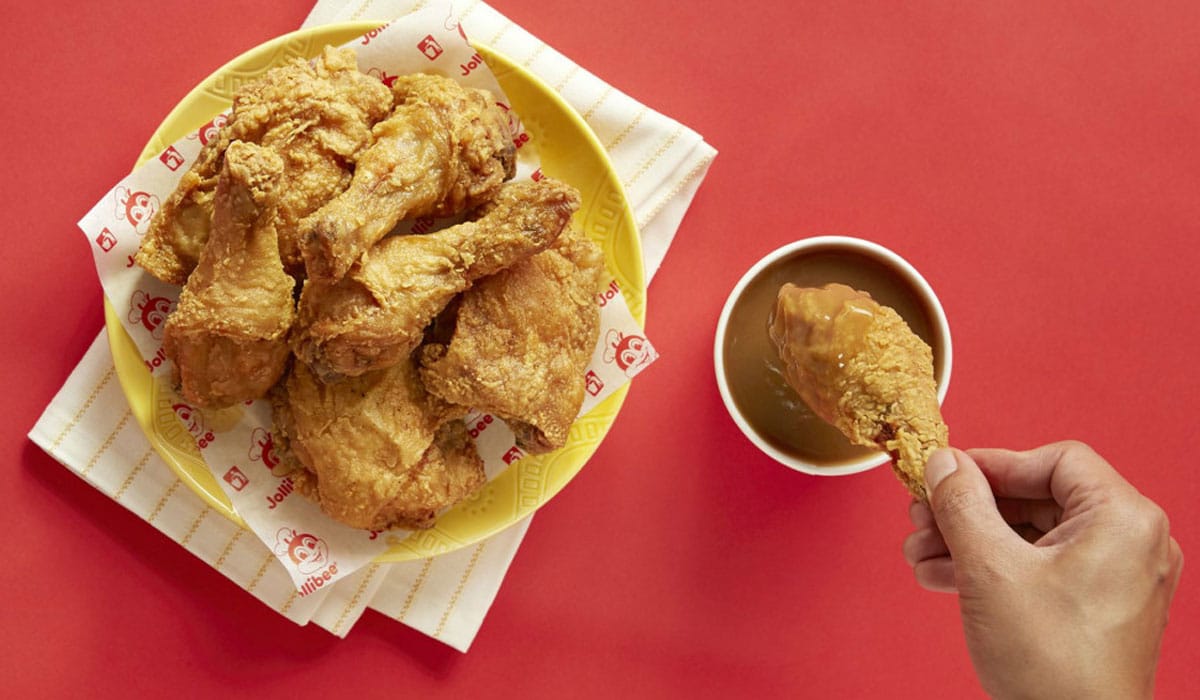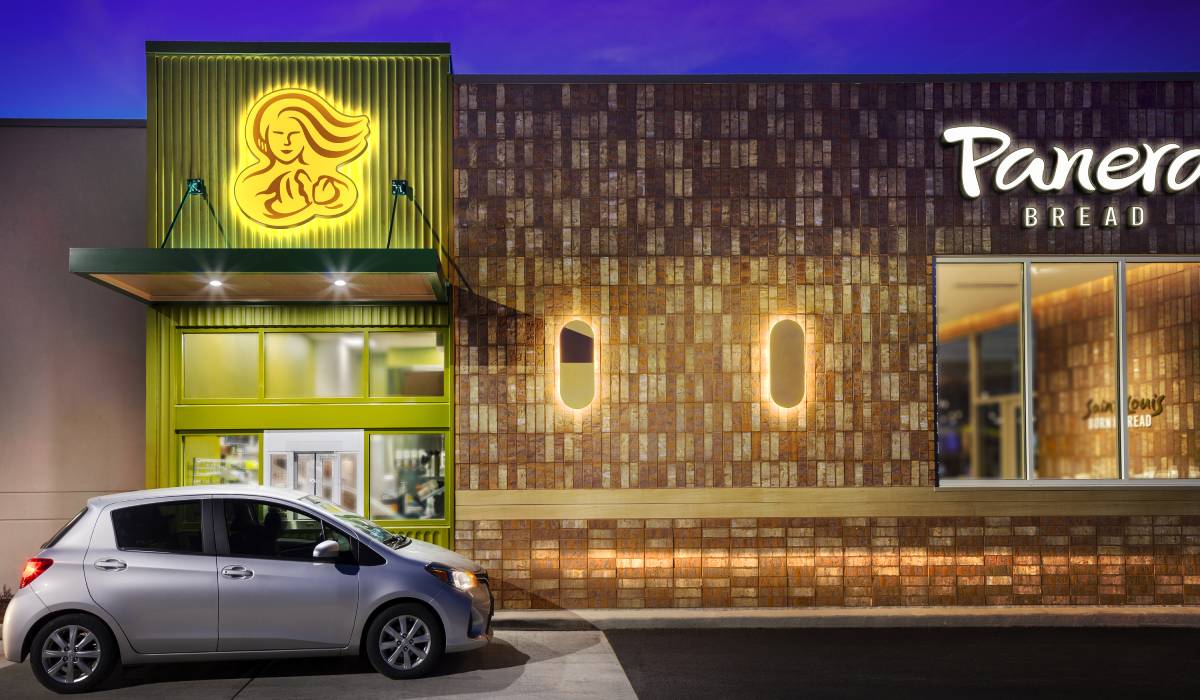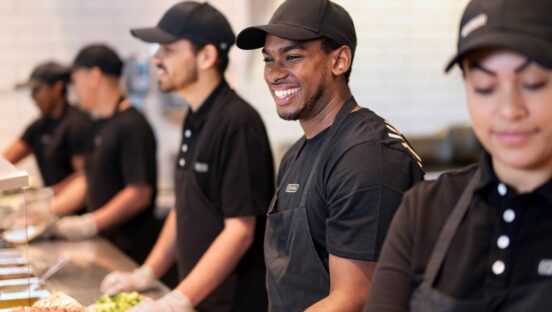COVID-19 didn’t tell Panera a digital revolution was bubbling to the surface. Long before the pandemic flipped trends upside down, the 2,100-unit chain crossed a threshold in which off-premises began mixing more than 50 percent of its sales. Consumers had spoken, and Panera needed to ensure it had the right restaurant to embrace modernization, says Chief Development Officer Rob Sopkin, who’s been with the brand since 2018.
“We recognized that we had an opportunity to update our look and feel and find the design that we felt was more forward-thinking, more focused on the craft of what Panera is, and something that we felt would simultaneously improve our business model and better meet the needs of what we were already seeing from a trend line standpoint from our customers,” he says.
The bakery-cafe started by gathering a team to work on an innovative store layout. On one side was a group of Panera’s top franchisees. The other, a cross-functional unit comprising IT, operations, engineering, human resources, and other key departments.
The kickoff meeting occurred in the winter of 2020, just weeks before COVID put the country on lockdown. But effort on the prototype never stopped, and for good reason.
“Most of the work that ultimately took place, took place during really the worst of the COVID shutdown,” Sopkin says. “The assumption already was that we had an opportunity to better meet our customers’ needs through a new box. And then this really accelerated things a little bit, and if anything, put an exclamation point on what we were already working on.”
A few months later, Panera directed attention toward a warehouse in Chicago, which held a life-sized cardboard replica of the company’s vision, from the high ceiling exterior to the full kitchen with existing equipment. The company proceeded to walk through and search for greater efficiencies. A wider corporate group was brought into Chicago in waves, as well as additional franchisees—all in an effort to retrieve as much feedback as possible.
Panera ultimately landed on a 3,500-square-foot NextGen design in Ballwin, Missouri, just 7.6 miles away from its first restaurant. The fast casual brought the prototype to life in partnership with ChangeUp, a brand design agency that’s also worked with Taco Bell, Panda Express, Jimmy John’s, Nike, Cadillac, and Macy’s.
“The development of NextGen highlights how relentless we have been to satisfy the needs of not only guests, but also our associates,” says CEO Niren Chaudhary. “Panera NextGen cafe is tech-enabled not only for our guests, but also in the back-of-house—using technology to simplify and optimize the associate experience.”
The store, which debuted in November 2021, features a double drive-thru, with one lane dedicated to mobile orders, or as the company calls it, “Rapid Pick-Up.” The enhancement lines up well with where the industry is headed. Drive-thru represented 52 percent of off-premises traffic in the year ending October 2021, and increased visits by 9 percent compared to the year-ago period and by 23 percent versus two years prior, according to The NPD Group.
Inside, customers can either wait in line, use a digital kiosk, pick up their takeout meal, or go straight to a table and use the app to order a contactless dine-in meal. Guests also have the option of pulling up curbside and waiting for a team member to bring their food and beverages. The brand first announced Panera Curbside in May 2020, which involves technology that automatically notifies restaurants when a customer arrives.
“Panera’s NextGen cafes signal our company’s vision for the future of fast-casual dining—a frictionless, tech-powered yet warm and personalized dining experience,” Chaudhary says. “It’s fully focused on taking pride in baking, our strong commitment to our food values, and continuing our leadership in technology.”



“In a post-COVID world, Panera is showing up for our guests and shifting with their ever-changing needs—whether they want to dine in or out, we have every possible option for them from rapid pick-up to delivery to curbside to contactless dine-in or drive-thru,” he adds.
When customers arrive, they’re greeted with an outdoor seating section and an updated “Mother Bread” logo that nods to Panera’s bakery legacy and its more than 30-year-old sourdough starter, says Chief Brand Officer Eduardo Luz. The insignia was refreshed to have the “Mother” directly facing customers, therefore “warmly inviting them to come break bread with us at Panera.”
The interior was developed with customer wayfinding in mind. The restaurant includes a pickup area near the door so to-go guests can enter/exit seamlessly without moving farther into the cafe and creating additional congestion.
“We were thinking about the efficiency of the entire experience for the customer and really at every single touch point that became the foundation of what we were trying to get accomplished,” Sopkin says. “We wanted this to be a more intuitive experience for our guests so that they fundamentally understand what the customer journey is, where they’re ordering, and how this flows, where they’re picking up there drinks. Take any of the guess work or confusion out of that.”
Placing an off-premises section near the entrance also signifies a shift in how Panera approaches delivery, Sopkin says. The chain built its own fleet of drivers in the years leading up to the pandemic, but the fast casual since moved toward an outsourced method. A little more than six months into the pandemic, delivery sales were up 100 percent, or more, depending on the market.
“We saw a pretty significant acceleration in that business overall as more and more people were migrating to the third-party delivery platforms,” Sopkin says. “Between the sales going up and then also changing the model and going to third party, that affected our design.”
Another goal, Sopkin notes, was to showcase what Panera was founded on—baking and fresh bread. An overhanging mirror reflects a multitude of treats, and bakery ovens and tables are in full view. In prior iterations, the process was more of a back-of-house discussion, but now, Sopkin says little is left to the imagination and baking has moved to the “heart of the experience.”
Although the restaurant industry is accelerating toward an off-premises-dependent world, Luz says, customers still value Panera’s dine-in atmosphere that “delights all their senses.”
“Our guests use our cafes as an extension of their own homes,” Luz says. “They cozily enjoy their meals by our fireplace. They love to watch our bakers create deliciousness right in front of their eyes and sample the latest creations. And of course, the aroma of freshly baked bread, straight from the oven, keeps our guests wanting to come back for more. The NextGen cafes incorporate all these rich dine-in experiences.”
For the back of house, the restaurant experimented with different layouts, but eventually opted for an integrated line, meaning food and beverages are produced in a centralized spot, regardless of how the customer orders.
The choice reduces labor costs and proved to be a more intuitive process for employees, Sopkin says. The size of the prototype can flex upward or downward depending on real estate, but in every box, the kitchen remains the same square footage; only the front of house and dining room seating changes.
In terms of drive-thru, Panera chose digital menuboards to ease friction and add a layer of engagement. Through geo-fencing technology, the restaurant is able to automatically pinpoint a MyPanera loyalty member when they arrive at the cafe. Once identified, the customer is greeted by name, and their experience becomes highly personalized.
For instance, consumers can easily re-order past favorites and Panera can leverage known preferences to offer recommendations and tips for better menu matches. In August, the fast casual reported 45 percent of sales were e-commerce, and its loyalty program comprised 44 million users.
During the pandemic, Panera’s pivot to more off-premises and digital orders was fueled by new deals like its MyPanera+ Coffee subscription program, which offers unlimited iced and hot coffee and hot tea for $8.99 per month—any size, any flavor, and redeemable every two hours. The company also debuted Flatbread Pizza, a portable food segment that saw record-breaking sales when dining rooms were restricted.
“Panera’s guests are very discerning,” Luz says. “They love delicious, chef-curated food that tastes amazing because it only uses the best ingredients. They also want omni-channel convenience as they live busy lives and don’t want to waste time.”
 [image source_ID=”131466″]
[image source_ID=”131466″]
“We see our customers are excited about us in any of these environments, whether it’s urban or suburban, and what we’re trying to do is meet them where they want to be met,” Sopkin says.
“With NextGen, we are making all these Panera traits even stronger, which in turn will further differentiate our experience,” he continues. “We believe that over time, this differentiation will continue to attract new guests, while we retain and delight the already loyal ones.”
The DNA of the design will be represented in all Panera restaurants going forward, except for a handful of units that were conceptualized prior to the fast casual landing on its prototype. Sopkin says there may be some instances in which the company cannot implement a dual-lane drive-thru, but if the site works and it’s the right trade area, it is willing to move forward with a traditional drive-thru. Sopkin says the company saw double drive-thru sites enter the pipeline about 65 percent of the time.
Some elements, such as the exterior signage, fluted green tower, and frontal view of the bakery will also carry over to existing stores as part of the company’s remodel program.
The NextGen store in Missouri is about 20 percent smaller than Panera’s most recent standard prototype. Previously, locations required a $1.5 million to build, but the latest design is closer to $1.3 million.
“There’s a lot of noise and construction costs right now in terms of inflation and different things that are going on in supply chain,” Sopkin says. “But for the next year out forecasting, we’re going to be able to achieve our new store cost around that $1.3 million number.”
“That’s what it does do is allow us to get into some of the tighter, smaller footprints at 3,500 square feet,” he adds. “And there were certainly instances where finding a 4,500-square-foot cafe with a drive-thru didn’t fit on certain site zones. So it actually gives us increased flexibility to get into more locations.”
Panera’s new restaurant is part of a significant transition in the fast casual’s history. In August, the bakery-cafe chain announced it was uniting with sister concepts Caribou Coffee and Einstein Bros. Bagels to form Panera Brands. Combined, the group encompasses nearly 4,000 locations and 110,000 employees in 10 countries, making it one of the industry’s largest fast-casual platforms.
Chaudhary says the goal is to leverage core competencies and the scale of Panera—such as its digital program and expansive franchise model—to turbocharge growth of Caribou and Einstein Bros. Each restaurant is owned by German conglomerate JAB Holding, which purchased Panera for $7.5 billion in 2017, Caribou for $340 million in 2012, and Einstein Noah Restaurant Group for $374 million in 2014.
Then in November, Panera Brands revealed plans to go public with the assistance of restaurateur Danny Meyer and his special purpose acquisition company Union Square Hospitality Group Corp. “It’s a portfolio of complementary brands that are stronger together, bound by common values and each are well-positioned for growth,” Chaudhary says. “Together, the three brands form a powerhouse platform with common values and shared belief that we can be force multipliers for good. Panera Bread as the leader in food you feel good about eating, Caribou Coffee as a leader in delicious coffee, and Einstein Bros Bagels as a leader in craveable breakfast.”
As for Panera’s upcoming development plans, Sopkin can’t get into specifics because of the impending IPO, but he does feel bullish about both corporate and franchise growth, which each make up about 50 percent of the footprint.
The chain is energized by NextGen and drive-thru potential in suburbs, and also rethinking what the new era means for urban and nontraditional environments.
“We see our customers are excited about us in any of these environments, whether it’s urban or suburban, and what we’re trying to do is meet them where they want to be met,” Sopkin says.








